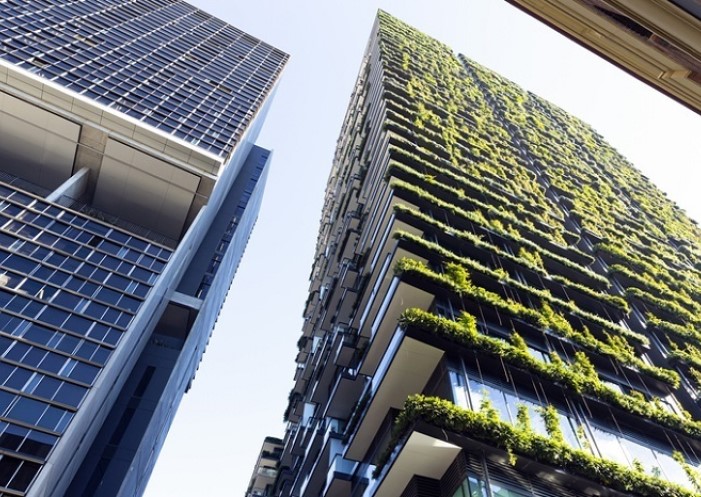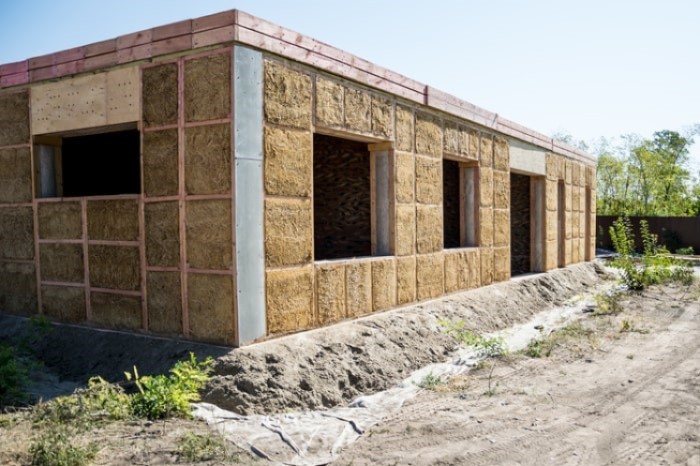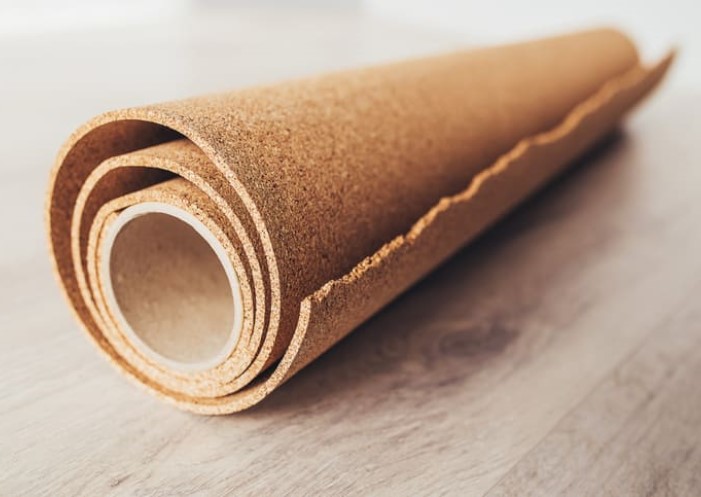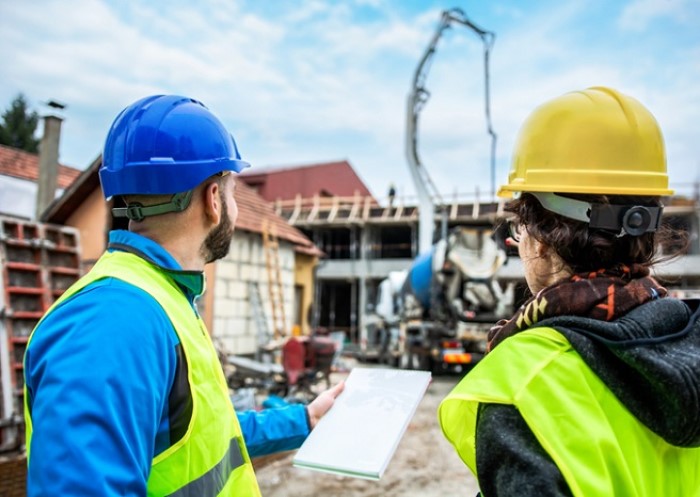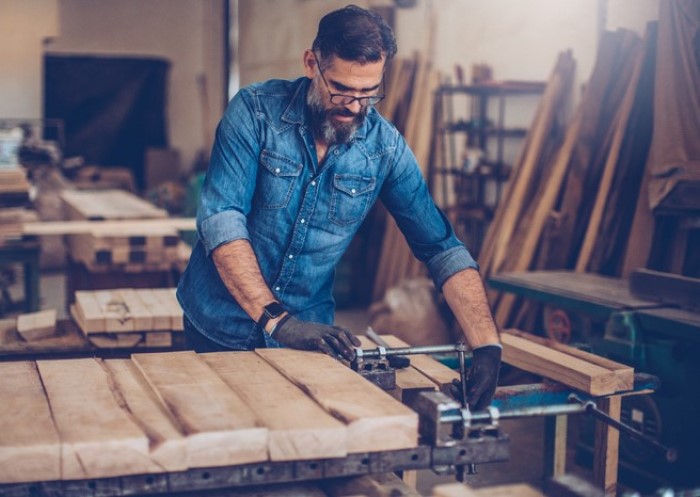Table of contents
Sustainable building is one of the central topics when it comes to the future design of inner cities and conurbations. In view of global warming and the climate crisis, it is more important than ever to keep the impact of construction measures on ecosystems and the environment as low as possible. This applies not only to the construction itself, but also to the subsequent use of the buildings – whether residential or commercial.
In the following sustainable building guide, you will learn about all aspects of sustainability in construction, the benefits of sustainable building materials and the options available for green building.
What are the goals of sustainable building?
Sustainability in construction is primarily aimed at protecting the environment and natural resources. This is not limited to the construction phase, but to the entire life cycle of a building. After all, it is of little use if a building is made entirely of renewable and degradable raw materials but can only be used for a few years or has an insufficient energy balance.
Moreover, sustainability in building refers not only to ecological, but also to economic and socio-cultural aspects. These aspects are on an equal footing. This means that they should ideally be incorporated in equal proportions into the planning and implementation of new construction and refurbishment projects.
| Dimension of sustainable building | Goal | Implementation |
|---|---|---|
| Ecological dimension | • Environmental and species protection • Minimal impact on the ecosystem | • Responsible use of renewable raw materials and natural resources • Use of recyclable or residue-free degradable raw materials |
| Economic dimension | • Reduction of operating costs and improvement of economic efficiency | • Durable building materials and technologies • Energy-efficient heating and hot water supply • Passive, efficient and plus-energy construction methods • Energy-efficient insulation (thermal insulation and heat shield through roof and façade greening) • Rainwater management (as usable water) • Natural air flows in the building, replacing air conditioning |
| Socio-cultural dimension | • Promotion of quality of life both in the building and in inner cities and urban areas | • Safe, functional and health-promoting design (‘green architecture’) • Greening of facades and roofs for climate-neutral living and air improvement in inner cities |
Ecological or alternative building has been a theme in architecture since the 1970s. However, until now the focus has been exclusively on the effects of building projects on the environment and ecosystems. Economic and socio-cultural aspects have been given less consideration so far and this ideally needs to change.
What are the options for environmentally friendly construction?
The demands placed on buildings and structures of the future are high. To build in a truly sustainable way the building’s resource and energy requirements must be the focus from the very beginning. It is important to find environmentally friendly solutions for raw materials and building materials, as well as for the energy supply of the building.
1. Suitable building materials for green building
For sustainable building, it is important that the building materials are obtained from naturally occurring resources. These include wood, clay, sand, and lime, but also insulation materials made of hemp, wool or wood fibres.
However, this alone is not enough. The building materials used must be produced or processed in environmentally friendly ways and should be available in sufficient quantities or at least grow back faster than they are consumed. Factors such as durability, transport routes and recycling also play a role in the sustainable extraction of raw materials. Ideally, the building materials for a construction project should come from the local area, should be characterised by its durability, and can be reused when the building is deconstructed at a later date.
2. The energy balance of sustainable buildings
An important pillar for sustainability in construction is a climate-neutral energy supply. To achieve this, the energy demand should be significantly reduced compared to older buildings (e.g. through improved insulation), and conditions should be created for the building to generate its own energy (e.g. through solar cells or heat recovery technology). Ideally, this will generate exactly as much or even more energy annually than is needed to operate the building.
Depending on how much of the required energy comes from renewable energy sources, buildings can be divided into different energy efficiency classes:
- Low-energy house: The energy requirement is significantly reduced compared to the requirements set out in the UK building regulations.
- Passive house: Most or all of the energy consumed comes from passive heat sources (built into the house).
- Zero-energy house: The energy demand is completely covered by the energy generated by the house.
- Plus-energy house: The amount of energy generated exceeds the house’s own requirements.
In order to ensure self-sufficient energy generation and supply, sustainable building architecture must meet very specific requirements:
• Strong insulation and double glazing for high thermal insulation
• Compact construction to avoid thermal bridges
• Large window and roof areas facing south for optimum use of solar radiation
• Photovoltaic cells on the roof and facade or as transparent modules in the windows to operate the solar system
• Largely airtight construction enables heat recovery
• Air and water heating by solar energy or geothermal heat exchanger or heat pump
• Open construction inside for optimal air circulation
In particular, insulation and heat-storing building materials combined with a compact design keep heat loss to a minimum. At the same time, sustainable building architecture must support the installation and optimal use of various energy-generating systems.
3. Green spaces and roof parks – ‘Green architecture’
The terms ‘green architecture’ or ‘green building’ should crucially avoid creating concrete deserts in inner cities or at least break them up with greenery. Instead of individual balcony planting, large-scale roof and façade greening should be a part of sustainable building for the future. This not only provides beautiful splashes of colour, but also helps to improve the climate and the quality of living in cities through the following:
• Shade in summer, thermal insulation in winter
• Storage of rainwater
• Evaporation provides pleasant humidity and binds fine dust
• Cooler ambient temperature
• Purification of the air, as CO2 is converted into oxygen
• Noise insulation and privacy
• Habitat for insects and birds
• Relaxing effect for residents
Promotion and certification of sustainable buildings
Sustainable and environmentally friendly building is supported by several organisations in the UK. The best known is BREEAM (Building Research Establishment’s Environmental Assessment Method). This is the world’s first sustainability rating scheme for the built environment. It has contributed a huge amount to the strong focus in the UK on sustainability in building design, construction, and use.
BREEAM has laid down all the basic principles for planning, implementing, and operating sustainable buildings in its guidelines for sustainable construction. More than 550,000 buildings have been BREEAM-certified. More than two million are registered for certification in more than 50 countries worldwide.
BREEAM takes the form of an assessment undertaken by independent licensed assessors. These assessments use scientifically based sustainable building criteria and indices covering a range of environmental issues. The assessment categories evaluate a range of values including energy and water use, health and wellbeing, pollution, transport, materials, waste, ecology, and management processes. Buildings are given a rating ranging from ‘pass’ to ‘outstanding’.
FAQ for sustainable building
Sustainability in construction considers ecological, economic and socio-cultural aspects over the entire life cycle of a building. This is achieved by using renewable and reusable raw materials, energy-efficient plant technology and ecological building architecture. All aspects flow into the planning from the very beginning and influence the choice of materials, construction methods and design of the building project.
The economical and responsible use of natural resources and the reduction of energy consumption benefit the environment. At the same time, follow-up and operating costs (for heating, cooling, electricity and hot water) can be significantly reduced and the quality of living and life in cities improved in the long term.
The biggest challenge is financing, because the planning and construction costs are relatively high compared to conventional construction. In order to construct a building in a truly sustainable way, a major investment is initially required, but this pays off in the long run through considerable savings in operating and follow-up costs.
Image source:
© gettyimages.de – gpointstudio

